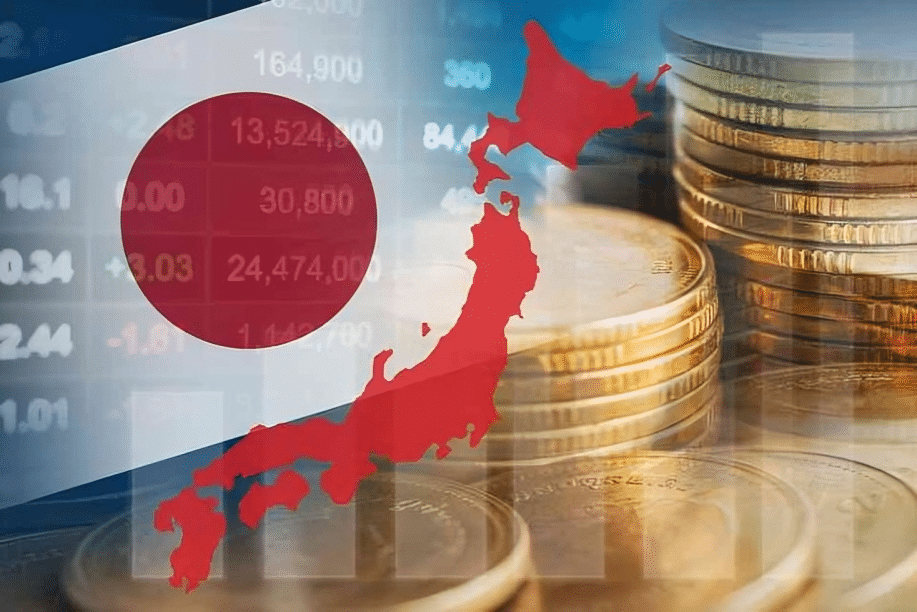The implications of Japan’s economy expanding annualised
Japan’s economy has shown significant resilience recently, with an annualised expansion of 1.0% recorded for the April–June quarter. This growth comes at a time when many global economies face challenges, creating a blend of optimism and caution among economists and policymakers. Understanding the implications of such an economic shift is crucial for stakeholders across various sectors.
Boosting consumer confidence
The expansion of Japan’s economy typically leads to elevated consumer confidence. When people feel secure in their jobs and financial situations, they are more likely to spend money. An increase in consumer spending drives demand for goods and services, which can lead to businesses expanding operations, hiring more staff, and increasing wages.
Here are a few ways in which consumer confidence can be strengthened:
- Stable job market encouraging spending.
- Increased availability of credit for consumers.
- Government incentives and stimuli targeting economic growth.
Business investment and innovation
As Japan’s economy expands, businesses are often inspired to invest in new technologies and improve their operations. An expanding economy creates a fertile ground for innovation, as companies look to capitalise on growth opportunities. This could translate into more research and development (R&D), leading to new products and services that can enhance Japan’s global competitiveness.
Key factors driving business investment include:
- Expansion of manufacturing capabilities.
- Investment in sustainable practices.
- Enhancement of digital technologies.
Impact on international trade
Japan’s annualised economic growth can positively influence its international trade relationships. As demand for Japanese goods increases domestically, production ramps up, resulting in higher exports. This trend can improve Japan’s trade balance and strengthen its currency, the yen.
Moreover, foreign markets may perceive a growing Japanese economy as a sign of stability. This perception can encourage international partners to engage more readily with Japanese businesses, resulting in:
- Potential trade deals with new partners.
- Increased foreign direct investment (FDI).
- Stronger ties to emerging markets.
Potential challenges that may arise
While the expansion is encouraging, it is essential to be aware of potential challenges that might arise. A 1.0% annualised growth can put pressure on inflation and interest rates. As the economy grows, prices may rise due to increased demand, which could lead to inflation hitting levels that may concern policymakers.
Some of the challenges could include:
- Rising costs of living affecting consumer spending.
- Potential for the Bank of Japan to increase interest rates.
- Possible strains on supply chains, especially if demand surges suddenly.
Future economic policies and directions
As Japan’s economy expands, there may be a shift in economic policies aimed at sustaining growth. The government might introduce initiatives to support ongoing expansion, such as tax reforms, infrastructure investment, and policies that enhance labour productivity. These strategies will be crucial in ensuring sustained economic prosperity without fostering adverse effects like excessive inflation.
Potential policy directions could include:
- Encouraging entrepreneurship to rejuvenate local economies.
- Fostering education and upskilling of the workforce.
- Spearheading environmental initiatives whilst ensuring economic growth.
Japan’s economy expanding at an annualised rate of 1.0% in April–June has far-reaching implications. The positive outlook may bolster consumer confidence and stimulate business investment, but potential challenges must be navigated wisely. By closely monitoring these factors, stakeholders can harness the benefits while mitigating risks, paving the way for sustainable economic health in Japan.
Economic resilience during April–June
Japan’s economic landscape has shown remarkable resilience in recent months, particularly evident during the April to June period. During this time, the economy expanded at an annualised rate of 1.0%. This positive growth adds to the ongoing narrative of recovery and adaptation in a post-pandemic world, showcasing Japan’s capability to navigate through challenges and sustain growth amidst global uncertainties.
The drivers of this growth can be traced back to various sectors, with consumer spending playing a pivotal role. After facing prolonged economic constraints due to the pandemic, households are becoming more confident in spending. As individuals venture out more frequently and restrictions ease, retail sales and services are expected to continue to rebound. This uptick in consumer spending is crucial, as domestic demand significantly contributes to the nation’s economic performance.
In addition to consumer activities, Japan’s exports have also seen a surge during the April to June quarter. This can be attributed to strong demand from international markets, particularly in electronics and manufacturing. As supply chain disruptions gradually ease, Japanese manufacturers are ramping up production to meet the increasing global demand. The export growth not only boosts the economy but also strengthens Japan’s position in the global market.
The government’s stimulus measures have been instrumental in fostering this growth. Financial injections aimed at supporting businesses and consumers have helped to stabilise economic conditions. These measures have not only provided immediate relief but have also laid the groundwork for sustained growth by enhancing infrastructure and innovating industries. Consequently, the economic policies implemented are showing tangible results as evidenced by the recent growth data.
However, challenges remain and must be acknowledged. One of the significant concerns is inflation. With rising prices of raw materials and transportation costs, Japan’s inflation is at risk of outpacing wage growth, which could dampen overall consumer confidence. Maintaining balance will be essential; thus, monitoring inflation trends is critical for the future of Japan’s economy.
Another factor to consider is the labour market. Due to demographic changes, Japan faces a declining workforce. While automation and technology adoption offer possible solutions, they require time and investment. Additionally, the government has been pushing for policies that promote workforce diversity, including increasing the participation of women and foreign workers in the labour force. This is a progressive step, as a more diverse workforce can enhance productivity and innovation within the economy.
Even with these challenges, various economists remain hopeful about Japan’s economic future. Emerging sectors such as green technology and digital transformation present new opportunities, which could lead to significant advancements in both domestic and international markets. By investing in sustainable practices and innovative technologies, Japan can secure its economic position and adapt to future trends.
As Japan continues on this path of economic recovery, awareness of the global economic climate remains vital. Events such as geopolitical tensions and fluctuations in international trade can have ripple effects on the nation’s economy. Therefore, ongoing assessments and strategic adjustments will play a crucial role in navigating these complexities.
While Japan’s economy expanded at an annualised rate of 1.0% during April–June — a sign of recovery and growth — the path ahead is multifaceted and requires concerted efforts from various stakeholders. Consumers, businesses, and government entities must work collaboratively to sustain this momentum, ensuring that the economic growth benefits all citizens. Understanding these dynamics gives a clearer picture of where Japan stands today and how it may evolve in the future.
Conclusion
The expansion of Japan’s economy by an annualised 1.0% in the April–June quarter marks a significant milestone for the country. This growth is not just a number; it reflects the resilience and adaptability of Japan’s economic landscape amid global uncertainties. Key factors fueling this growth include robust consumer spending, increased exports, and a steady recovery in business investment. As consumers show confidence by spending more, businesses are encouraged to invest, creating a positive feedback loop that benefits the overall economy.
Moreover, the supportive policies from the Japanese government and the Bank of Japan have played a crucial role in maintaining stability and stimulating growth. These measures ensure that businesses and consumers feel secure in their financial decisions. The government’s commitment to innovation and technology also paves the way for sustainable economic development.
Looking ahead, it is essential for Japan to maintain this momentum by addressing challenges such as demographic shifts and labour shortages. By fostering an environment that encourages skills development and innovation, Japan can continue to thrive in the global market. Additionally, enhancing international trade relationships will be vital for sustaining growth outside its domestic borders. Japan’s economy proves that with the right strategies and investments, it can adapt and flourish even in challenging times. Embracing these opportunities will not only benefit Japan but also contribute to the stability of the global economy. As we follow Japan’s economic journey, it becomes clear that growth is achievable with collaboration and forward-thinking initiatives.
Comparison, examination, and analysis between investment houses
Leave your details, and an expert from our team will get back to you as soon as possible
* This article, in whole or in part, does not contain any promise of investment returns, nor does it constitute professional advice to make investments in any particular field.
To read more about the full disclaimer, click here- Ronny Mor
- •
- 17 Min Read
- •
- ago 5 minutes
 UnitedHealth Stock Soars as Warren Buffett’s Berkshire Hathaway Discloses $1.57B Stake
UnitedHealth Stock Soars as Warren Buffett’s Berkshire Hathaway Discloses $1.57B Stake
The Impact of Warren Buffett’s Investment in UnitedHealth on Stock Market Trends Warren Buffett’s move to invest a whopping $1.57
- ago 5 minutes
- •
- 17 Min Read
The Impact of Warren Buffett’s Investment in UnitedHealth on Stock Market Trends Warren Buffett’s move to invest a whopping $1.57
- sagi habasov
- •
- 16 Min Read
- •
- ago 25 minutes
 America Is Barrelling Toward a ‘Deflationary Shock’ as 3 Forces Hit Consumer Demand, a Top Economist Says
America Is Barrelling Toward a ‘Deflationary Shock’ as 3 Forces Hit Consumer Demand, a Top Economist Says
Analyzing the Impacts of a Deflationary Shock on Consumer Demand in America As America navigates its complex economic landscape, the
- ago 25 minutes
- •
- 16 Min Read
Analyzing the Impacts of a Deflationary Shock on Consumer Demand in America As America navigates its complex economic landscape, the
- orshu
- •
- 7 Min Read
- •
- ago 3 hours
 Asia Markets Mixed on Friday as Japan’s Nikkei Falls; Australia and India Inch Higher
Asia Markets Mixed on Friday as Japan’s Nikkei Falls; Australia and India Inch Higher
Asian Stocks Open with Diverging Trends Friday, August 15 — Asian markets started the morning session with a mixed tone
- ago 3 hours
- •
- 7 Min Read
Asian Stocks Open with Diverging Trends Friday, August 15 — Asian markets started the morning session with a mixed tone
- Lior mor
- •
- 6 Min Read
- •
- ago 3 hours
 Chris Hohn’s Portfolio – Q2-2025 Snapshot and the Investment Logic Behind TCI
Chris Hohn’s Portfolio – Q2-2025 Snapshot and the Investment Logic Behind TCI
Executive Overview TCI Fund Management, led by Sir Chris Hohn, continues to run a concentrated portfolio built around “soft monopolies.”
- ago 3 hours
- •
- 6 Min Read
Executive Overview TCI Fund Management, led by Sir Chris Hohn, continues to run a concentrated portfolio built around “soft monopolies.”












